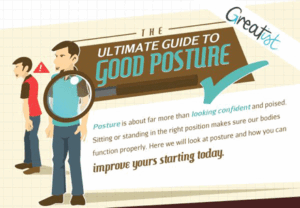Achilles Tendon Disorder
Achilles Tendon Disorder
Massage therapists see many clients with active lifestyles. Running, jumping, dancing, climbing, or any number of other activities can put serious stress on the Achilles tendon (AT). AT disorders also can contribute to biomechanical disorders in the foot and lower extremity.
That is why it is important for the massage practitioner to understand more about the structure, function and pathology of this very important tendon.
The AT is the strongest tendon in the body and needs this strength because of the high force loads required during motions such as walking, running or landing from a jump. AT disorders can occur at any age, but there is an increased frequency in older populations. The increased age of the active baby boomer generation in this country suggests we likely are to see more of this condition in years to come. The tendon is susceptible to a variety of pathologies, such as paratendinitis (also spelled paratendonitis), tendinosis and tendinitis. Some of these different terms can be confusing, so I'll distinguish them below.
Structure, Function and Pathology
The AT connects the gastrocnemius and soleus muscles to the calcaneus. The tendon is surrounded by a thin membrane called the paratenon, which helps facilitate blood supply throughout the tendon. There is a region of the AT near the distal insertion, called the avascular zone that has a very poor blood supply (Figure 1). This region frequently is the site of inflammation and degenerative changes within the tendon.
The term tendinitis is used for overuse tendon pathologies throughout the body. Yet, most of these conditions do not involve inflammation so they truly aren't tendinitis (the suffix -itis indicates inflammation). Yet the AT is one tendon that commonly does have inflammatory activity in the tendon and the paratenon. Consequently, the terms tendinitis and paratendinitis usually are accurate when referring to the AT.
Achilles tendinitis is classified as insertional or non-insertional. Insertional tendinitis involves pathology at the insertion of the AT into the calcaneus. It is prevalent in older individuals and those who engage in activities without proper conditioning. Poor healing of minor tendon damage occurs at the calcaneal tendon insertion due to the lack of blood supply in the avascular region.1
The second category of overuse AT disorders is non-insertional tendonitis - those that don't affect the insertion of the tendon into the calcaneus, but cause problems in other areas of the tendon. Non-insertional tendinitis typically affects athletes and those engaged in vigorous physical activity. The pathologies under the umbrella of non-insertional tendinitis include paratendonitis (inflammation of the paratenon), tendinosis (collagen degeneration within the tendon) and tendinitis (inflammation of the tendon).
Tendinosis is degeneration of the collagen matrix within the tendon, which leads to pain and loss of function. It commonly is categorized as non-insertional tendinitis, even though it is not an inflammatory disorder. The degenerative changes of tendinosis are caused by age, repetitive microtrauma or other factors that lead to collagen breakdown. The collagen degeneration frequently precedes inflammatory conditions such as tendinitis.
Non-insertional tendinitis can be acute or chronic and primarily affects the avascular zone near the base of the tendon. There is tenderness throughout the tendon and fibrous thickening near the distal end, which is apparent when the tendon is compared to the unaffected side (assuming the other side is not affected). In many cases, tendinitis and paratendinitis occur together and both the tendon and paratenon are inflamed. If not treated properly, tendinitis can lead to either partial or complete tendon ruptures.2
Recent studies show a link between certain medications and the onset of AT degeneration and ruptures. Especially implicated are medications in the fluoroquinolone family of antibiotics, such as ciprofloxacin (brand named Cipro).3-5 These medications cause tendon pathology in large tendons of the body, even in the absence of vigorous repeated activity. In addition, systemic disorders such as hyperthyroidism, renal insufficiency, gout or rheumatoid arthritis also can contribute to tendinitis in the AT.6,7
Treatment Considerations
AT disorders are best controlled through rest and activity modification. Rest means stopping offending activities, not immobilization. Lack of movement might lead to the development of fibrous adhesions. Cold applications and anti-inflammatory medication may be used to address inflammatory activity if present. As soon as stretching is tolerable, it is helpful to stretch the AT several times per day.
Massage applications to the calf muscles reduce tension and decrease tensile forces on the tendon. Deep friction, as tolerated in the problem area, is beneficial in stimulating fibroblast proliferation in the tendon to repair the damaged collagen matrix. Cold applications prior to the deep friction reduce the intensity of the discomfort, and reapplying cold after treatment reduces the accelerated metabolic response to the friction. Heel lifts inside the shoe may be recommended to help reduce tension on the tendon. Corticosteroid injections formerly were used with greater frequency and are not recommended now because of long-term detrimental effects on the tendon, such as tendon rupture.8 Massage therapists applying these concepts of evaluation and treatment will be much more effective in helping their clients address this frequent cause of foot and lower leg pain.
References
- Carr AJ, Norris SH. The blood supply of the calcaneal tendon. J Bone Joint Surg Br, Jan 1989;71(1):100-1.
- Corrigan B, Maitland GD. Musculoskeletal and Sports Injuries. Oxford: Butterworth Heinemann, 1994.
- Huston KA. Achilles tendinitis and tendon rupture due to fluoroquinolone antibiotics. N Engl J Med, 1994;331(11):748.
- Harrell RM. Fluoroquinolone-induced tendinopathy: what do we know? South Med J, 1999;92(6):622-5.
- Williams RJ, Attia E, Wickiewicz TL, Hannafin JA. The effect of ciprofloxacin on tendon, paratenon, and capsular fibroblast metabolism. Am J Sports Med, May-Jun 2000;28(3):364-9.
- Matsumoto K, Hukuda S, Nishioka J, Asajima S. Rupture of the Achilles tendon in rheumatoid arthritis with histologic evidence of enthesitis. A case report. Clin Orthop Relat Res, Jul 1992(280):235-40.
- Lesic A, Bumbasirevic M. Disorders of the Achilles tendon. Current Orthopedics, 2004;18:63-75.
- Shrier I, Matheson GO, Kohl HW III. Achilles tendonitis: are corticosteroid injections useful or harmful? Clin J Sport Med, 1996;6(4):245-50.
Ready to #feelbetter?
You're just a click away from a wicked good massage!
-

60 Minute Massage Gift Card
$170.00 Add to cart -

90 Minute Massage Gift Card
$255.00 Add to cart -

Mini Aer Small Room Air Purifier
$149.00 Add to cart -
Sale!

Thera-Pearl Sports Pack/Hot Cold
Original price was: $14.99.$12.99Current price is: $12.99. Add to cart -

3 Somadome Sessions Gift Card
$135.00 Add to cart -

TheraBand CLX Connective Loop
$14.99 Select options -

6 Somadome Sessions Gift Card
$270.00 Add to cart -
Sale!

Biofreeze
Original price was: $14.99.$12.99Current price is: $12.99. Add to cart
Passion Mountain
I was at an event recently and was asked by somebody how I could STILL be so passionate for what I do. He said, “What I mean is that you talk about what you do with the passion of child flipping through a new pack of baseball cards. I wish I was that passionate about…
Read MoreFish You Should Scale Back On
New Englander’s love their seafood and we deepen our love affair every summer when our favorite crustaceans, ‘lobstah’ is a plentiful. But what is the best seafood for us and what are the ones that we should be staying away from regardless of how yummy they may be? Monterey Bay Aquarium has combined data from…
Read MoreSports are a Great Metaphor
It’s no secret that my life has always revolved around athletics. From my early days playing pop warner football, through my college years of lacrosse and on into the various community leagues since, being part of a team has always been where I feel most comfortable. What I enjoy most about being part of a…
Read MoreWhat is an Expert?
“An expert is someone widely recognized as a reliable source of technique or skill whose faculty for judging or deciding rightly, justly, or wisely is accorded authority and status by their peers or the public in a specific well-distinguished domain.” – Wikipedia This past month I flew to Atlanta to present a few classes in…
Read MoreThe Power of a Hug
Originally Posted 5/1/2014; following the 1 year anniversary of the Boston Marathon Bombings and our mission to rebound after these horrible attacks on our city. We helped orchestrate the ‘One Run for Boston’; a 3328.2 NON-STOP running relay from LA to Boston, raising over $500K for the victims and survivors of the events of 4/20/2013.…
Read MoreTips from the Table
Without fail, every marathon season, I am asked by my patients, what kind of advice I would offer up to them as they prepare to run the Boston marathon. I first admit that I have never (nor will ever) run a marathon, but given my unique insight of spending 1000’s of hours alone in a…
Read MoreShoulder Impingement
The glenohumeral joint is a highly complex articulation. It has the greatest range of motion of any joint in the body. However, its increased motion occurs at the expense of stability, requiring the soft tissues to play a more critical role in maintaining joint integrity. As a result of increased mechanical demands, numerous soft-tissue injuries…
Read MoreTrain, train, train. Train of fools.
In my seventeen years as a massage therapist, I am still amazed by some of the things I see in my office. Being situated 1/10th of a mile from the finish line of one of the most prestigious marathons in the world, the Boston Marathon, we see more than our fair share of runners coming…
Read MoreAchilles Tendon Disorder
Achilles Tendon Disorder Massage therapists see many clients with active lifestyles. Running, jumping, dancing, climbing, or any number of other activities can put serious stress on the Achilles tendon (AT). AT disorders also can contribute to biomechanical disorders in the foot and lower extremity. That is why it is important for the massage practitioner to…
Read More


